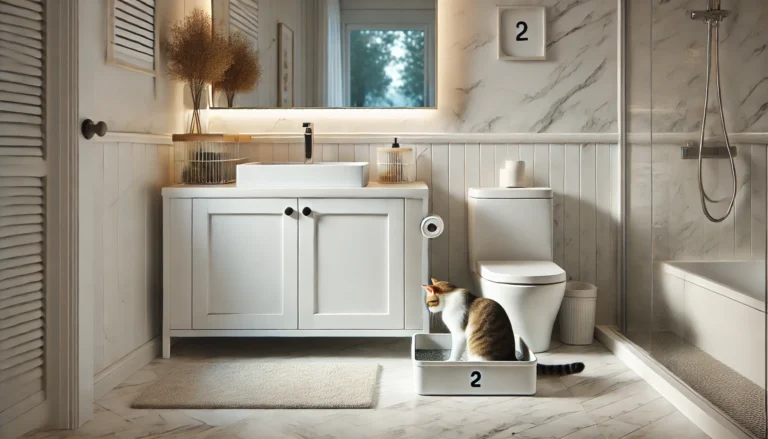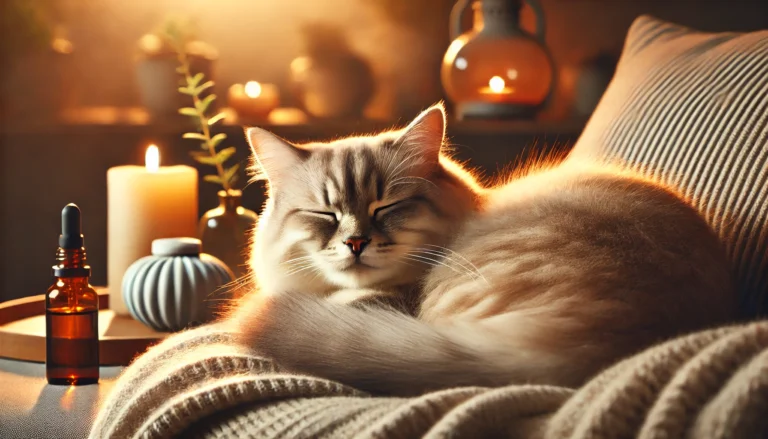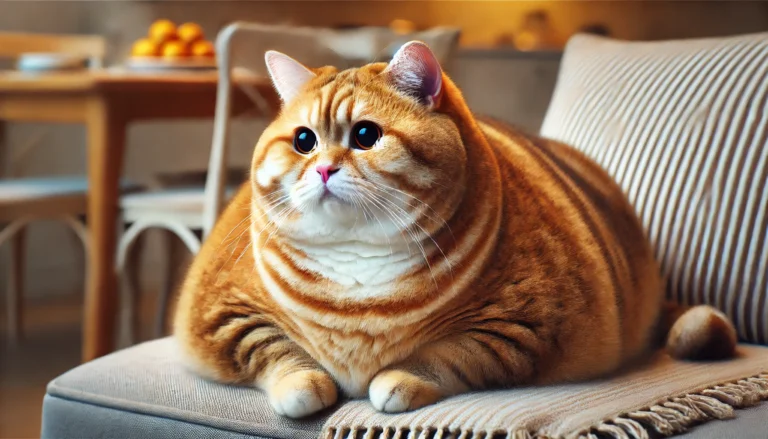6 Types of Hairless Cats and How to Care For Them
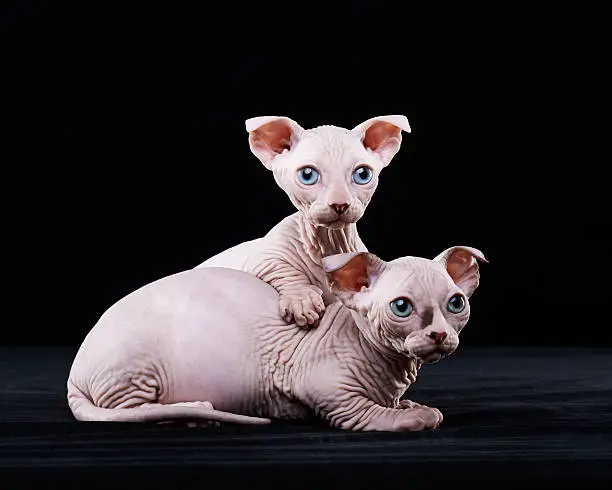
Hairless cats, often referred to as naked, bald, or skinless cats, are unique in the feline world due to their distinctive appearance and lack of a fur coat. These cats are not only eye-catching but also require specialized care. Here, we delve into the world of hairless cats, exploring various breeds, their care, and what makes them so special.

Understanding Hairless Cats
What is a hairless cat? A hairless cat, often characterized by its lack of fur, can range from completely bald to having a peach-like fuzz. The most well-known breed is the Sphynx, but there are several other types such as the Donskoy, Peterbald, and Bambino, each with unique traits.
6 Varieties of Hairless Cats:
- Sphynx: The Sphynx is immediately recognizable for its absence of fur, but it’s the texture of its skin that truly defines this breed. Soft and warm, the skin feels like chamois leather, inviting to the touch. Contrary to their alien-like appearance, Sphynx cats are known for their high energy and affectionate nature. They seek human companionship, often using their paw to gently touch their owners and maintain physical contact. Despite their lack of hair, Sphynx cats produce body oils, which means they require regular bathing to maintain a healthy skin condition.
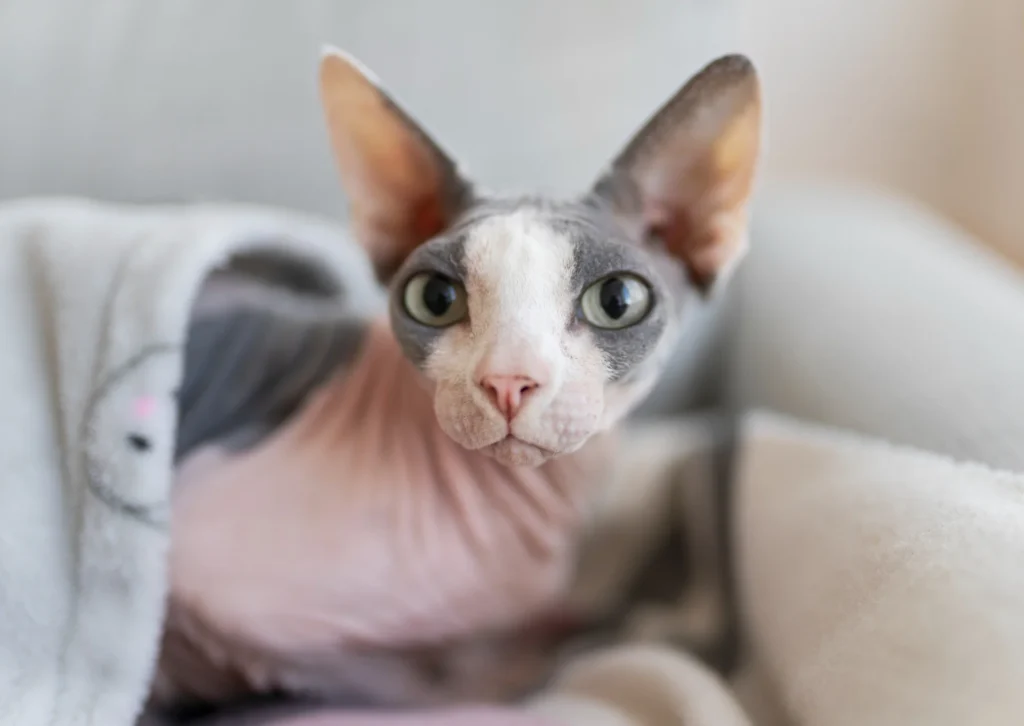
- Donskoy: Also known as the Don Sphynx, this breed exhibits a unique genetic trait—a dominant gene that can cause the cat to vary between completely hairless to a short, velvety coat. Originating in Russia, the Donskoy displays a muscular body, large ears, and an expressive face. The texture of their skin can be wrinkled, especially when they are kittens. Like the Sphynx, they are very friendly and enjoy interacting with their human families.
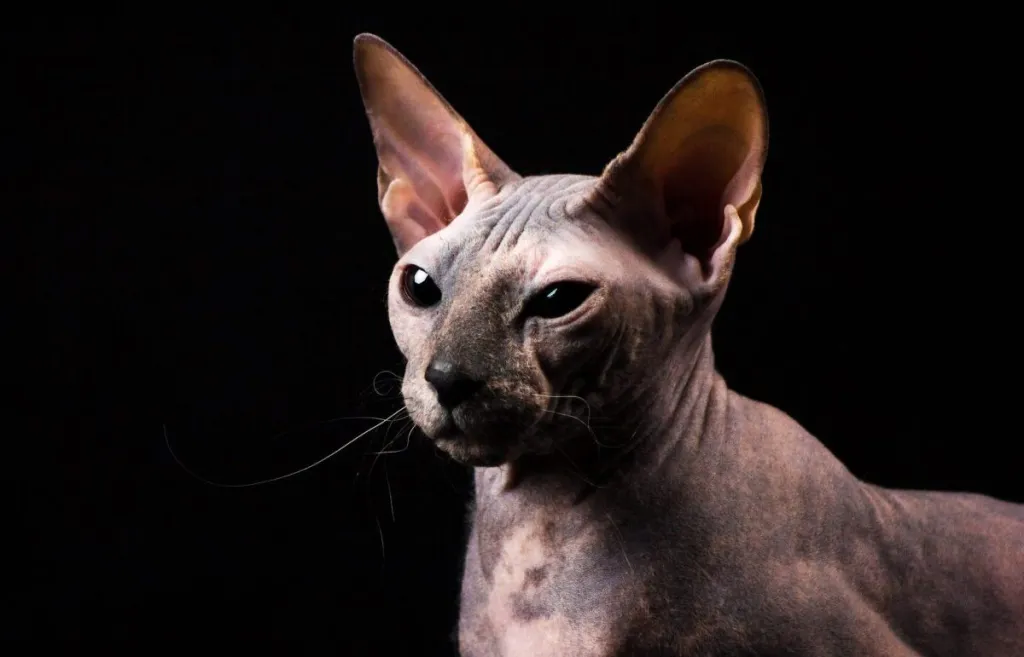
- Peterbald: Often mistaken for the Donskoy, the Peterbald shares some similarities but stands out due to its more elegant and slender physique. Originating from St. Petersburg, Russia, this breed can range from completely bald to having a soft down, which some liken to the touch of a peach. Peterbalds are known for their sweet, calm, and affectionate demeanor, and they integrate well into homes with other pets..

- Ukrainian Levkoy: Distinctive for its inward-folding ears and angular, sculpted facial structure, the Ukrainian Levkoy is truly a unique sight. Their skin is soft and wrinkled, and they may have a very fine layer of down or be completely hairless. This breed is known for its dog-like loyalty, often following its owner around the house. Ukrainian Levkoys are sociable, intelligent, and require interactive play to keep them engaged.

- Elf Cat: The Elf Cat is a captivating hybrid that combines the hairless quality of the Sphynx with the curled ears of the American Curl. Their ears, set like curls on top of their head, give the Elf Cat an impish appearance. They inherit the friendly, playful nature of both parent breeds, making them affectionate companions that crave human interaction and are always ready for playtime or a cuddle.

- Bambino: A delightful mix of the Sphynx and Munchkin breeds, the Bambino is noted for its short legs and hairless body. This breed combines the hairlessness and sociable nature of the Sphynx with the distinctive short stature of the Munchkin, leading to a cat that is as playful as it is unique. Bambinos are extremely friendly and maintain a kitten-like demeanor throughout their lives, constantly engaging with their environment and their human families.
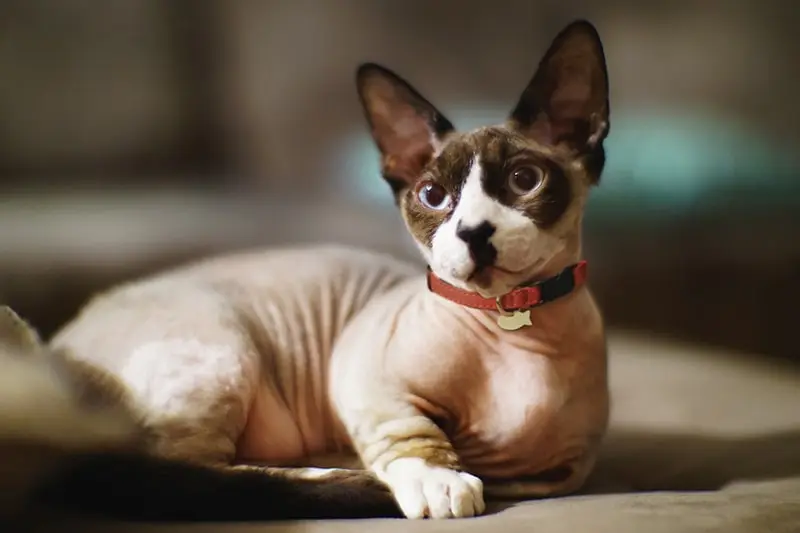
Care for Hairless Cats
Caring for a hairless cat involves more than dealing with a typical fur-covered cat. Their lack of hair presents unique challenges and care requirements:
- Skin Care: Regular bathing is essential to remove body oils that would normally be absorbed by fur. A gentle, cat-specific shampoo should be used to avoid skin irritation.
- Temperature Control: Without fur, hairless cats are sensitive to temperature extremes. They need warm clothing during cold weather and sun protection when exposed to direct sunlight.
- Nutrition: A nutritious diet is crucial to maintain their skin health. High-quality cat food that promotes coat and skin health is recommended, even though they lack a coat.
- Health Monitoring: Regular vet visits are necessary to check for conditions that these breeds may be prone to, such as dental issues or skin problems.
Cost and Considerations
Hairless cats can be quite expensive. The cost of a hairless cat typically depends on the breed, with Sphynx cats often being the most costly due to their popularity. In addition to the purchase price, prospective owners should consider the ongoing costs of high-quality diet, frequent veterinary check-ups, and grooming supplies.
Popularity and Price Variations:
- How much do hairless cats cost? Prices can range significantly, typically starting from around $1,000 and can go up to $4,000 for purebred kittens.
- Maintenance Costs: Due to their special needs, hairless cats can be more expensive to care for than their furry counterparts.
Conclusion
Hairless cats, with their distinct appearance and charming personalities, make wonderful pets for those prepared to meet their needs. Understanding the care involved with owning one of these cats, from their diet and skin care to their environmental needs, ensures that these unique felines lead healthy, happy lives. Whether you choose a playful Sphynx or a dignified Peterbald, a hairless cat can bring a lot of joy and a little extra warmth to your lap.

